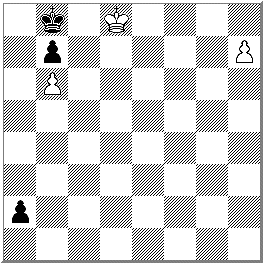Wonderful ending!

In the above position, White to play and checkmate black in the least number of moves. Black plays optimally(i.e. lasts for the most number of moves as he can). We define a positional value as the value of the piece* on that square times the product of the coordinates of that square**.
The first moves are forced(white can checkmate black in very few moves after that but black has many options which lead to checkmate in the same number of moves after that).
Enter your answer as the sum of the positional values till white's 5th move .
Details and assumptions:
*Following are the values of all the chess pieces: King=10, Queen=9, Rook=5, Bishop=3, Knight=3, Pawn=1.
If you want to promote a pawn, the value of the piece on that square is the value of the promoted piece which you want and not the pawn . You cannot promote a pawn to a king.
**The bottom left corner has the coordinates , bottom right corner , top left corner and top right corner ,etc.
Example of answer format(these are just random moves and have nothing to do with the position in the problem) :
1.e4 1...c5
2.Nf3 2...d6
3.Bb5+ 3...Bd7
4.Bxd7+ 4...Qxd7
5.Nc3 ...
The answer format will be .
This is a very similar answer format to what is required in the problem.
You may use a calculator to find the positional values.
The answer is 2384.
This section requires Javascript.
You are seeing this because something didn't load right. We suggest you, (a) try
refreshing the page, (b) enabling javascript if it is disabled on your browser and,
finally, (c)
loading the
non-javascript version of this page
. We're sorry about the hassle.
1.h8=Q 1...a1=Q
White cannot capture black's queen as it will lead to stalemate.
2.Qg8! This is the only move that wins! White is threatening either Kd7 or Ke7 mate. Black has just one valid reply:
2... Qa2
3.Qe8! Same idea! Black again has just one move in reply:
3... Qa4
4.Qe5+! 4...Ka8
5.Qh8!! The finishing blow. Now black cannot continue with the same idea with Qa1 as white captures the queen with a check!
Note that all these moves are forced. You may leave a comment if you want further explanation.
Now the boring part. The answer is ( 9 × 8 × 8 ) + ( 9 × 1 × 1 ) + ( 9 × 7 × 8 ) + ( 9 × 1 × 2 ) + ( 9 × 5 × 8 ) + ( 9 × 1 × 4 ) + ( 9 × 5 × 5 ) + ( 1 0 × 1 × 8 ) + ( 9 × 8 × 8 ) = 2 3 8 4